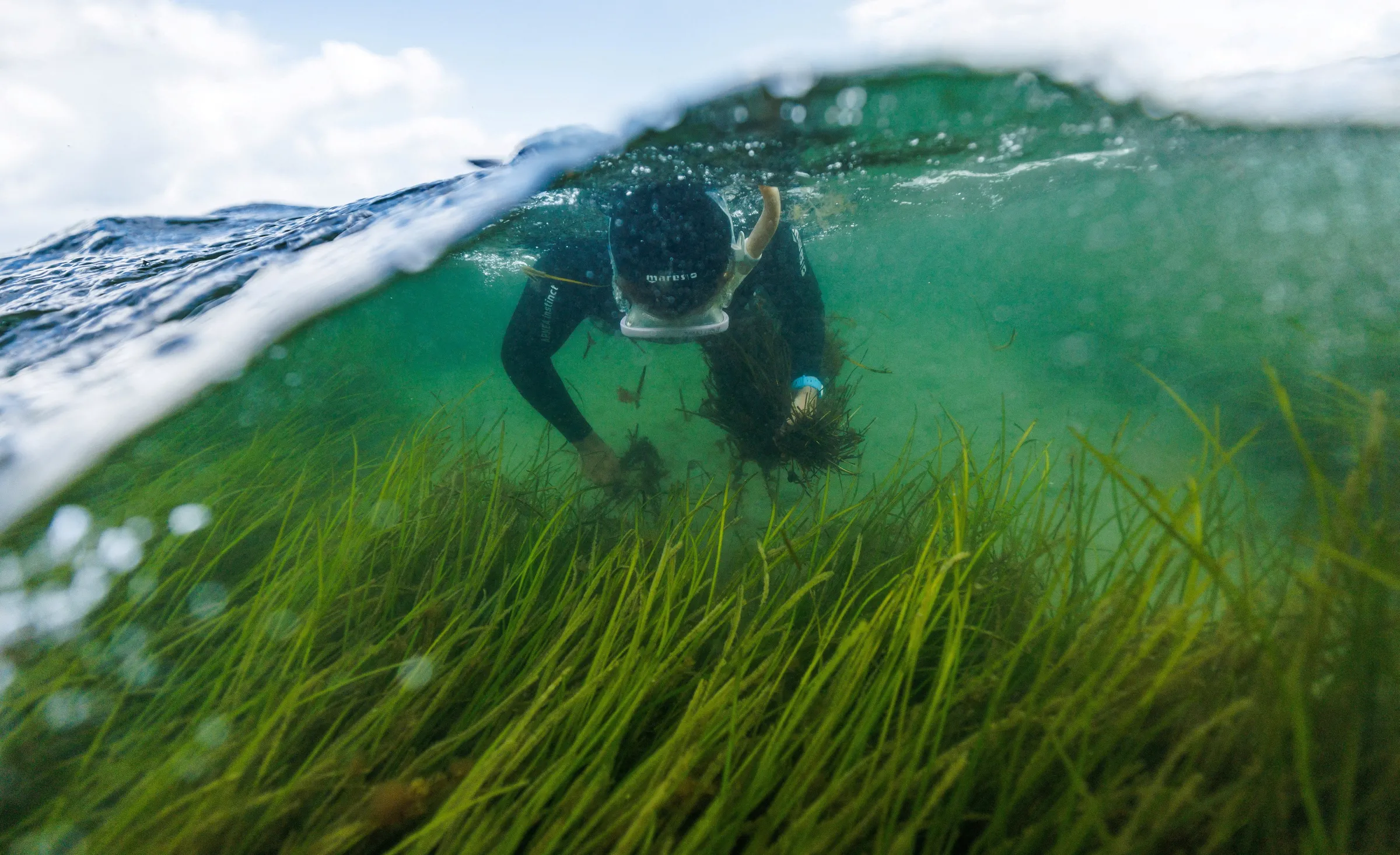Green gold: Why seagrass is a hidden climate hero

Marine Scientist picks flowering seagrass in Laboe, Germany July 10, 2023. REUTERS/Lisi Niesner
What’s the context?
The destruction of seagrass could derail progress in reining in planet-warming emissions and cost billions in environmental damage.
JOHANNESBURG - Alongside forests, soil and wetlands, another powerful natural carbon absorber critical to tackling climate change lies hidden beneath the ocean surface: seagrass.
The loss of these underwater meadows, also known as blue carbon, could hobble efforts to tackle climate change, both financially and environmentally, a new study has found.
So what exactly is this marine vegetation, and what else did the research find?
What is seagrass, and where is it found?
Seagrass is a type of flowering plant found in shallow coastal waters around every continent except Antarctica, according to the study published in the journal Nature Communications in collaboration with Conservation International.
Seagrass forms dense underwater meadows from the Arctic Circle to as far south as New Zealand.
More than 1 billion people live within 100 km (62 miles) of seagrass meadows, according to the World Resources Institute, a research non-profit.
The Nature Communications study highlights South Africa, the Mediterranean, Malaysia, Florida and Colombia as the world's top seagrass regions.
Why is seagrass so valuable to the planet?
Seagrass is considered one of the largest natural carbon sinks on the planet, according to the Global Change Biology journal.
Even though vegetated coastal ecosystems including seagrass cover only 2% of the ocean floor, they store nearly half of the carbon buried in ocean sediments, the Nature Communications study found.
Seagrass meadows slow down water flow, allowing organic matter to settle and accumulate on the ocean floor, burying organic carbon in the seabed, according to the Massachusetts Institute of Technology.
Plant roots and stems also capture and store carbon.
The Nature Communications study - the most comprehensive review of vegetated coastal ecosystems to date - found that if the world's seagrass is not protected, it could release 1.2 billion tonnes of carbon dioxide - equivalent to the annual carbon footprint of 100 million U.S. homes.
This loss would also cost the world more than $200 billion to respond to environmental damage or social costs linked to climate shocks, such as health expenses.

The sun lights up a seagrass meadow close to the beach of Falckenstein, near Kiel, Germany, July 10, 2023. REUTERS/Lisi Niesner
The sun lights up a seagrass meadow close to the beach of Falckenstein, near Kiel, Germany, July 10, 2023. REUTERS/Lisi Niesner
How does climate change affect seagrass?
Even though seagrass is key to fighting climate change, warming sea temperatures impact the plant's ability to do so.
Marine heatwaves have caused widespread die-offs in seagrass meadows, as seen in Florida Bay and Shark Bay, Australia, according to Frontiers research publishers.
But some studies have shown that seagrasses are more resilient than previously thought.
Initial research by the Dutch Institute for Water Education measured Baltic Sea seagrass responses to heatwaves and found high levels of acclimatisation to temperature, although researchers encouraged further research on the topic.
What are some seagrass conservation success stories?
There are different ways of rehabilitating damaged seagrass meadows from transplanting shoots to removing pollution.
But the restoration is expensive and labour-intensive, according to Frontiers.
Nonetheless, there are a growing number of rehabilitation success stories.
In Palk Bay and Gulf of Mannar in India, bamboo frames and coconut ropes are used by community members to tie the transplanted seagrass sprigs and fix them on the sea floor - an eco-friendly, low-cost method, according to Panorama, an environmental research platform.
In Whangarei Harbour, New Zealand, transplants have restored 40% of former seagrass areas through planting and improving water quality, according to the Seagrass Restoration Network.
In Cape Town, South Africa, transplant trials resulted in up to a 400% increase of seagrass in some areas, with the return of invertebrates including the false-eelgrass limpet, South Africa's most endangered marine invertebrate, a PubMed study found.
(Reporting by Kim Harrisberg; Editing by Ayla Jean Yackley.)
Context is powered by the Thomson Reuters Foundation Newsroom.
Our Standards: Thomson Reuters Trust Principles
Tags
- Carbon capture and storage
- Climate policy
- Climate and health
- Water
- Climate solutions

















